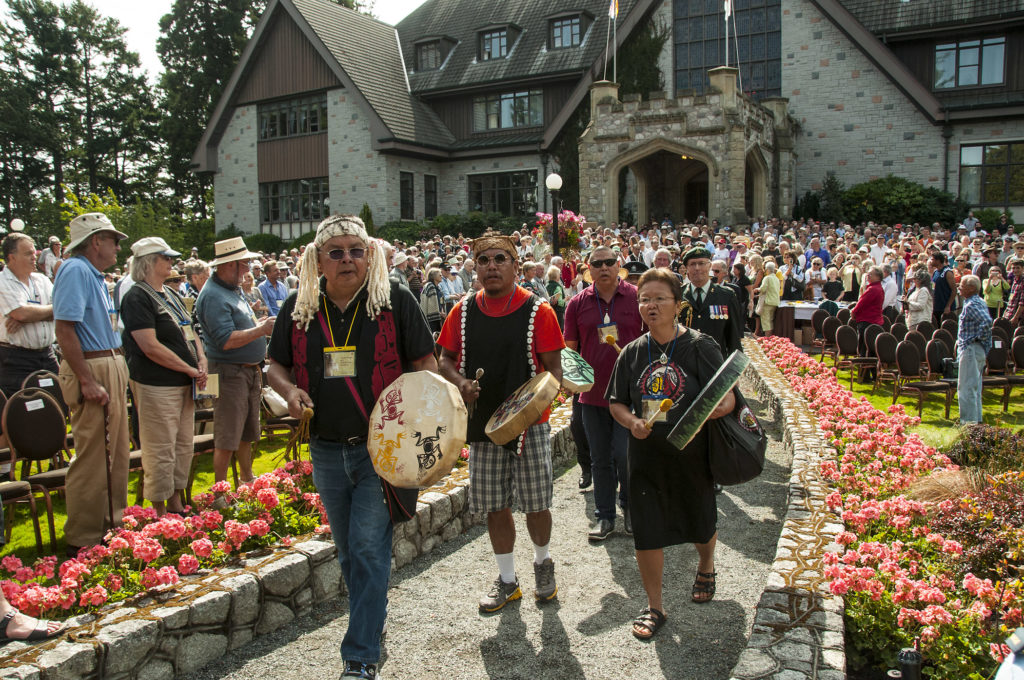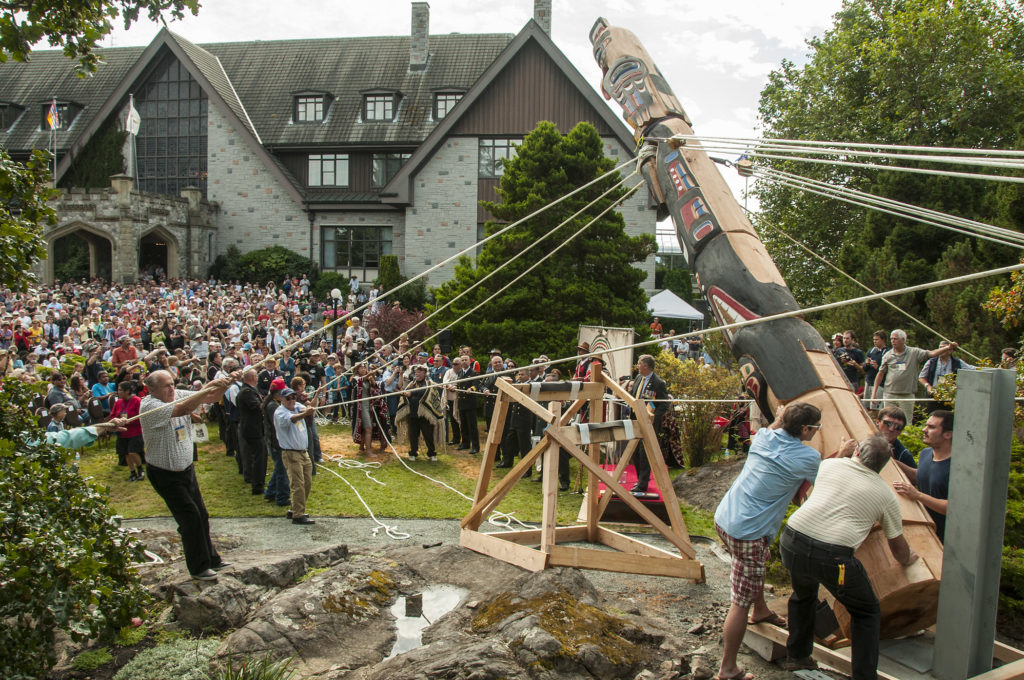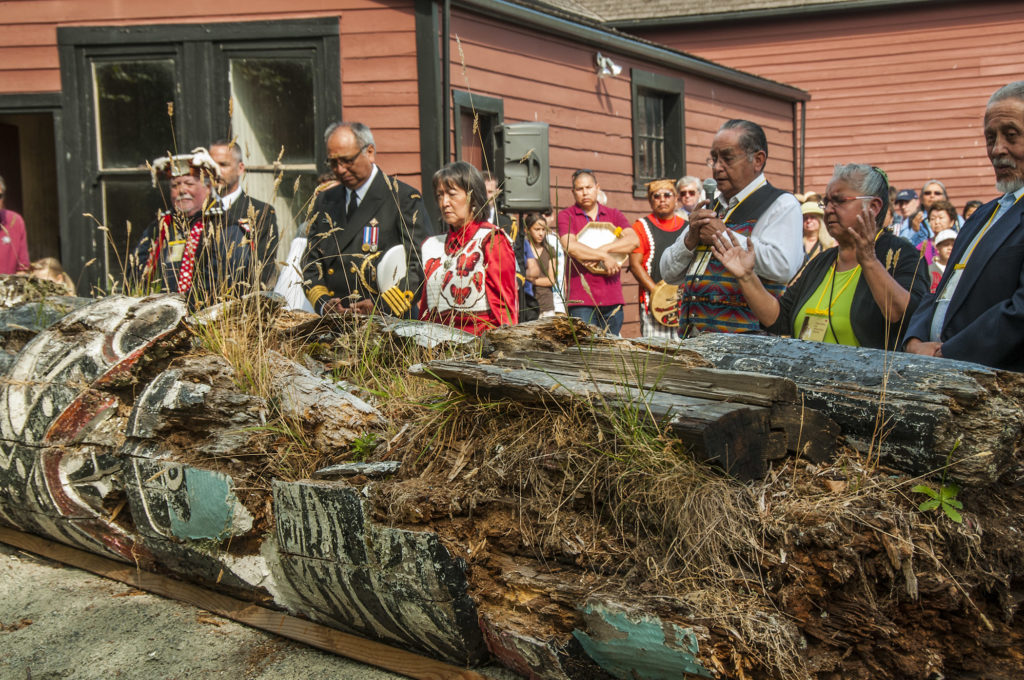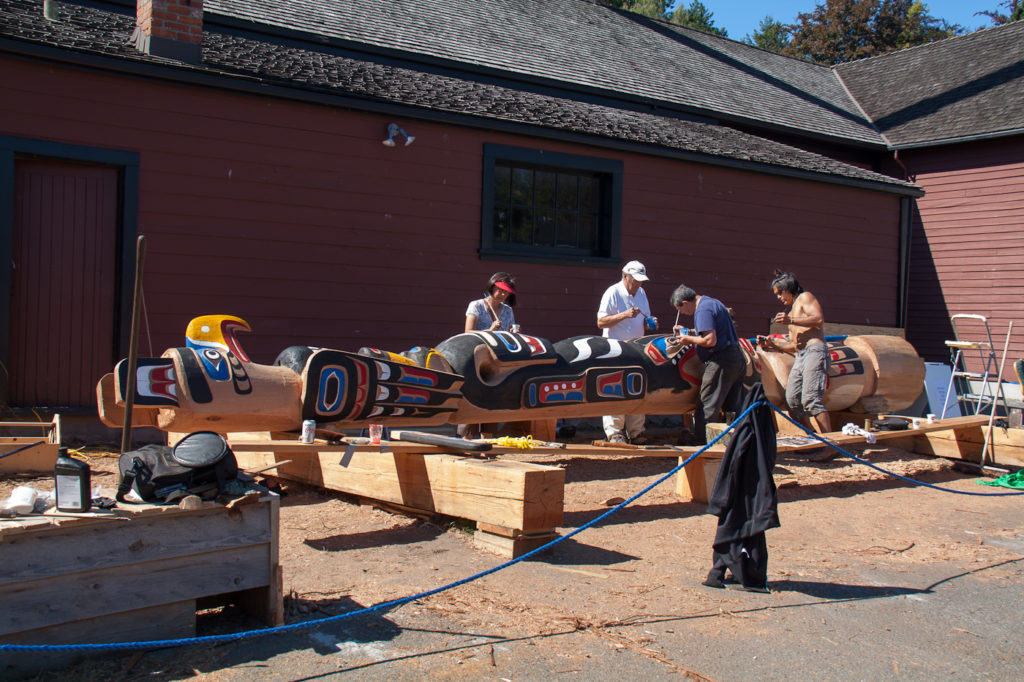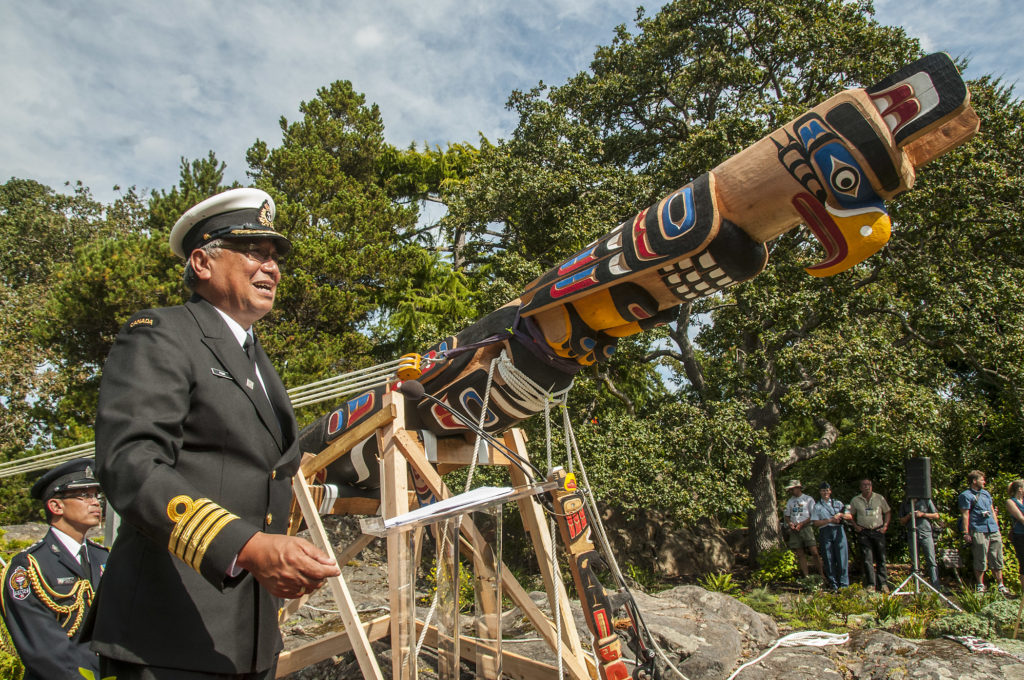One of my favourite things on the grounds of Government House is Hosaqami, a 24-foot totem pole carved from a 500-year old red cedar, painted in vivid yellow, blue and red. Carved by prolific Kwagiulth artist Chief Tony Hunt, its figures represent a Kulus (a supernatural bird, the younger sibling of the Thunderbird), an Orca and a chief holding a talking stick. These are the crests of the Hunt family, passed down by renowned carver and grandfather of Hunt, Chief Mungo Martin of Fort Rupert.
Hosaqami was raised on September 8, 2012, in a lively traditional ceremony hosted by the Honourable Steven Point, the first Indigenous Lieutenant Governor of British Columbia. He, alongside Hunt’s son Tony Hunt Jr. and other artists, assisted with the carving of Hosaqami. Also in attendance was Gordie McBryan of Shuswap Nation, Bill Shead of Peguis First Nation and Hal Lecoy, an Ojibwa originally from Pine Falls, Manitoba. These Navy veterans had their own special connection to the pole, as they, part of a crew of 15 Indigenous sailors, assisted in transporting the original Hosaqami to England back in the 1950s.
The pole that stands facing the Salish Sea at Government House is not the first Hosaqami. The original pole was commissioned in 1959 as a gift to the Royal Navy from the Royal Canadian Navy. Carved by Mungo Martin, then in his late 80s, he was assisted by his teenage grandson Tony, with their work raised a long way from BC, at the Whale Island naval base in Portsmouth, England. Their pole was battered by weather, fell in a storm, and brought back to Victoria in the late 1980s.
Deteriorated beyond restoration, the pole was laid to rest on the grounds of Government House. The original Hosaqami can now be viewed near the Cary Castle Mews, where it lies decomposing below a rough shelter, returning to the earth from whence it grew.
It was the Honourable Steven Point who suggested that Hosaqami be reproduced and raised at Government House, in honour of Queen Elizabeth’s Diamond Jubilee and for Indigenous veterans, like the men who helped bring the first pole to the British naval base half a century earlier. At the raising ceremony, the Lieutenant Governor described the pole as a reminder for “us all to stand in the same circle… [to] find a way to paddle together in one canoe.”
August 9 has been declared International Day of the World’s Indigenous Peoples, with the theme for 2019 being Indigenous Languages. I’ve been learning SENĆOŦEN, the language of the W̱SÁNEĆ People. Chief Tony Hunt was fluent in his native Kwak’wala, taught to him in turn by Chief Mungo Martin. I am so grateful for these artists, who were champions and ambassadors of their culture, knowledge and language. They shared these gifts with British Columbians and the rest of the world with great pride. I know that through Hosaqami, a symbol of the traditional craftsmanship and incredible artistic heritage of the Indigenous peoples of BC, Hunt and Martin have left an indelible legacy on the grounds of Government House to be enjoyed for generations.
One of the three key themes of the mandate of the Honourable Janet Austin is Reconciliation. Learn more about her other areas of focus.


